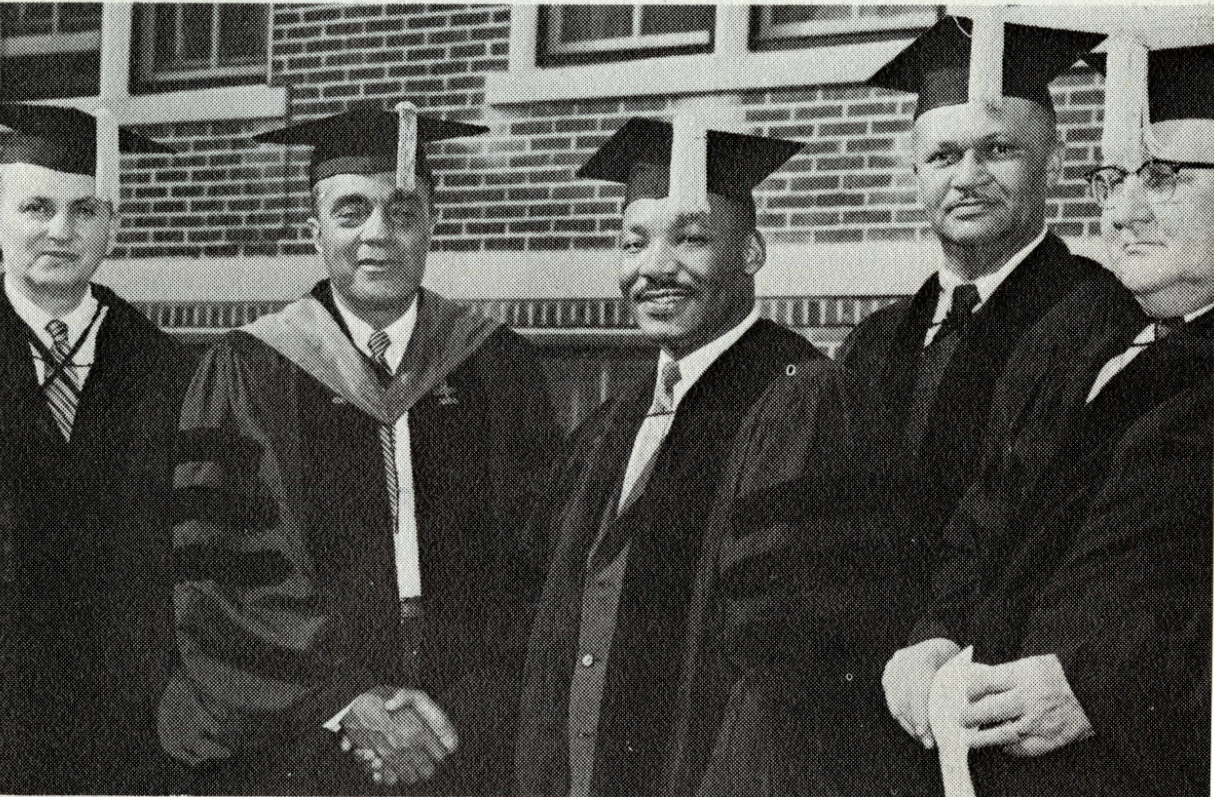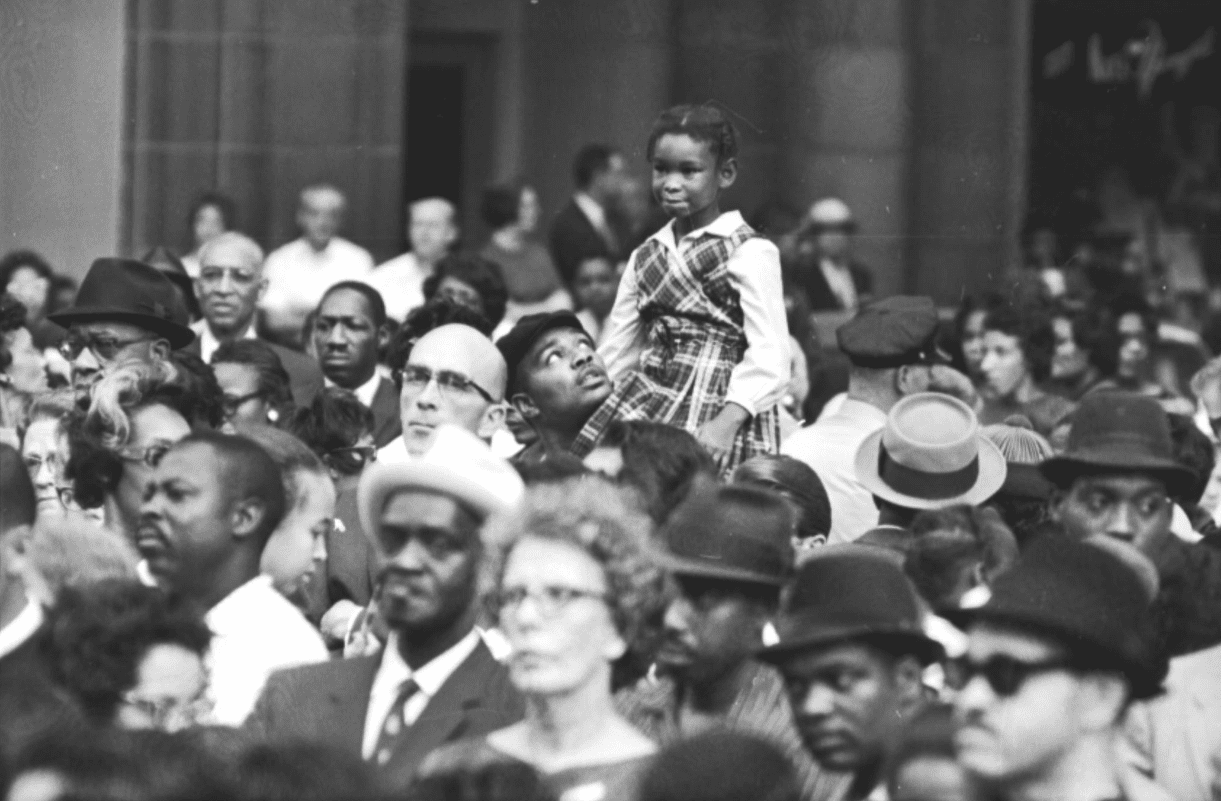Each year we celebrate the birthday of Rev. Dr. Martin Luther King, Jr. as a national holiday. Many of us choose to pass on lessons through recitations of his most poignant speeches and sermons, while others choose actions such as a day of service in their communities. Regardless of the way we acknowledge and commemorate this holiday, it is done within the spirit through which Dr. King lived his life. This spirit is one of love and unity. In light of the contentious events of these past weeks, we must take this year’s holiday as an opportunity to gaze inward at the heart of our nation’s soul and determine not just who we are, but who we want to be.
 Charles Harris Wesley shaking hands with Dr. Martin Luther King, Jr. shortly after receiving his honorary doctorate from Central State College in 1958. Photo: National Afro-American Museum and Cultural Center.
Charles Harris Wesley shaking hands with Dr. Martin Luther King, Jr. shortly after receiving his honorary doctorate from Central State College in 1958. Photo: National Afro-American Museum and Cultural Center.
We are a multiracial, multiethnic, multigender and multireligious nation with an array of problems that arise from such diversity. However, the problems we have do not define us; the way we come together to solve our problems is what truly sets us apart. As we consider Dr. King’s legacy, we are called to live up to the high moral bar he set. In doing so we have to look no further than the broad coalition of supporters he garnered who not only supported his cause for justice and equality, but also the ideals of America.
At the height of the Civil Rights Movement of the 1960s, around 250,000 people mobilized in marches and protests around the country. This past summer, between 15 and 26 million people participated in demonstrations for justice and equality, making it by far the largest and most diverse movement in American history. This is Dr. King’s legacy on display for all to see; a diverse alliance of Americans coming together to try and affect positive change.

A young girls sits on her father’s shoulders, part of the mile-long demonstration called “The March and Vote for Jobs and Freedom,” in Cincinnati, Ohio on October 27, 1963. The crowd was estimated to be from 15,000 to 30,000 people. Speeches, signs and songs reflected the message of the civil rights march. Photo: Ohio History Connection.
In 1967, the year before his assassination, Dr. King reminded us that, “the line of progress is never straight . . . It is like curving around a mountain when you are approaching a city. Often if feels as though you were moving backwards, and you lose sight of your goal: but in fact you are moving ahead, and soon you will see the city again, closer by.” Dr. King knew that difficult times would come, but that his vision for America was true and strong enough to withstand those times. He told us, “Darkness cannot drive out darkness: only light can do that. Hate cannot drive out hate: only love can do that.”
On this day as we celebrate one of the most compelling American figures in history, let us recognize the best in ourselves and those around us. It is easy for us to see the recent events and fall prey to the darkness, but hopefully we can follow Dr. King’s lead by focusing on the light. We must live up to his legacy by being the light through which darkness can finally be eradicated.